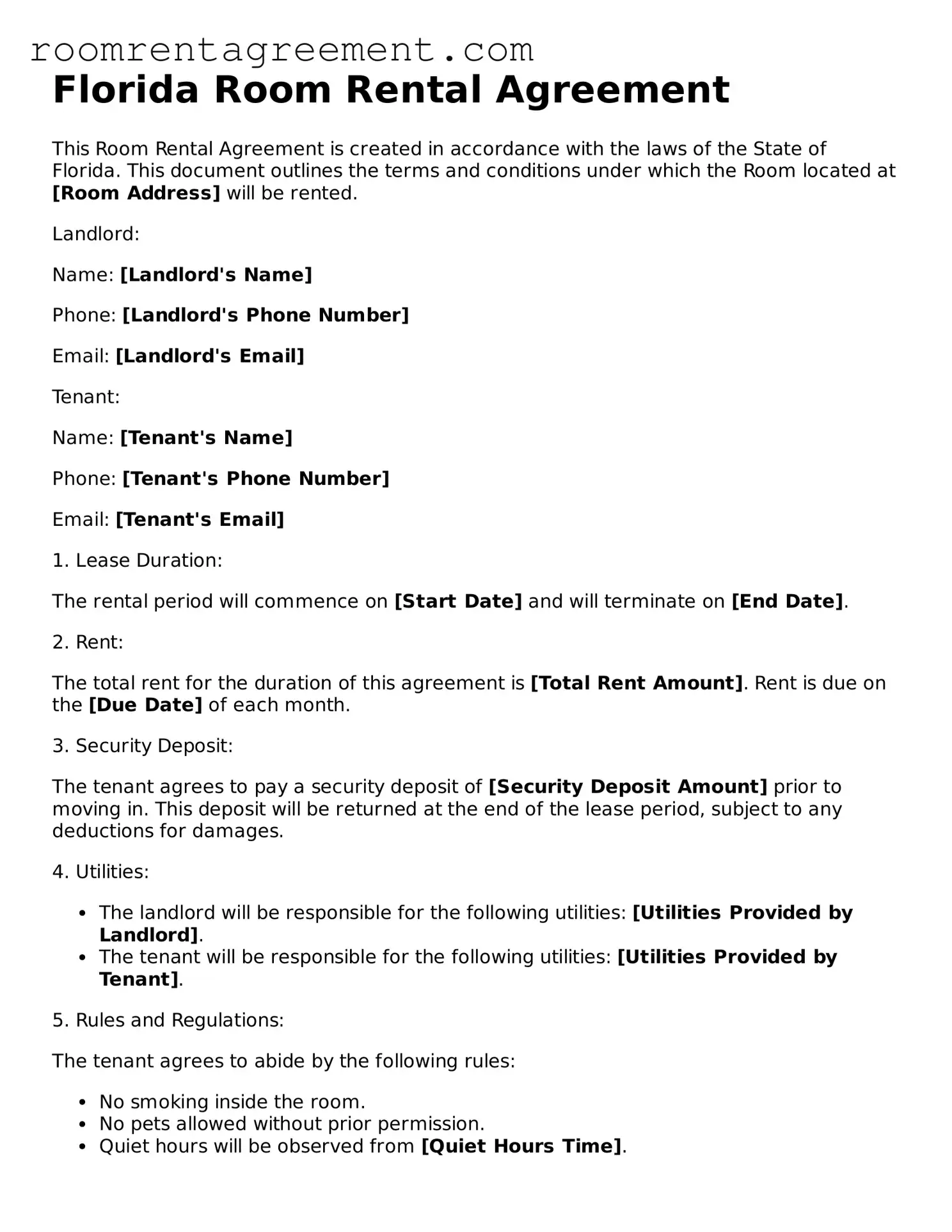More About Florida Room Rental Agreement
-
What is a Florida Room Rental Agreement?
A Florida Room Rental Agreement is a legal document that outlines the terms and conditions for renting a room in Florida. It serves to protect both the landlord and the tenant by clearly stating their rights and responsibilities. This agreement typically includes details such as the rental amount, duration of the lease, security deposit requirements, and rules regarding the use of the property.
-
Who should use a Room Rental Agreement?
This agreement is ideal for landlords renting out a room in their home or property. It is also beneficial for tenants seeking to rent a room, as it provides clarity on the rental terms. Both parties can refer to the agreement to resolve any disputes that may arise during the rental period.
-
What key elements are included in the agreement?
Key elements of a Florida Room Rental Agreement typically include:
- Names of the landlord and tenant
- Description of the rental property
- Rental amount and payment schedule
- Security deposit details
- Duration of the rental agreement
- Rules regarding property use and maintenance
- Termination conditions
-
How long does a Room Rental Agreement last?
The duration of a Room Rental Agreement can vary. It may be set for a fixed term, such as six months or one year, or it can be a month-to-month arrangement. The specific duration should be clearly stated in the agreement to avoid any misunderstandings.
-
Can the agreement be modified?
Yes, the Room Rental Agreement can be modified, but any changes must be agreed upon by both the landlord and the tenant. It is advisable to document any modifications in writing to ensure clarity and prevent future disputes.
-
What happens if either party wants to terminate the agreement?
The agreement should specify the conditions under which either party can terminate it. Typically, there is a notice period that must be adhered to, such as 30 days. Following the notice period, the tenant must vacate the property, and the landlord must return the security deposit, minus any deductions for damages, if applicable.
-
Is a Room Rental Agreement legally binding?
Yes, a Room Rental Agreement is a legally binding contract. Both parties are expected to adhere to the terms outlined in the agreement. If one party fails to comply, the other party may have legal grounds to seek remedies, such as pursuing damages or eviction in the case of non-payment.
-
Where can I find a Florida Room Rental Agreement template?
Templates for Florida Room Rental Agreements can be found online through various legal websites or local government resources. It is important to ensure that the template is up-to-date and complies with Florida laws. Additionally, consulting with a legal expert can provide guidance tailored to your specific situation.
